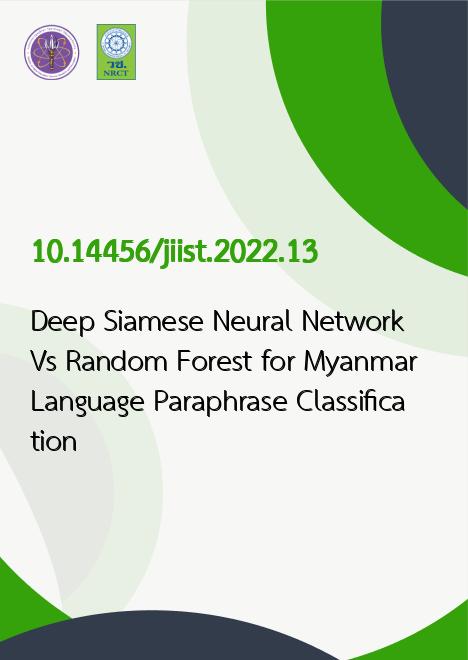
|
Deep Siamese Neural Network Vs Random Forest for Myanmar Language Paraphrase Classification |
|---|---|
| รหัสดีโอไอ | |
| Creator | Myint Myint Htay |
| Title | Deep Siamese Neural Network Vs Random Forest for Myanmar Language Paraphrase Classification |
| Contributor | Ye Kyaw Thu, Hnin Aye Thant, Thepchai Supnithi |
| Publisher | Sirindhorn International Institute of Technology, Bangkadi Campus (SIIT-BKD) |
| Publication Year | 2565 |
| Journal Title | Journal of Intelligent Informatics and Smart Technology |
| Journal Vol. | 8 |
| Page no. | 1-9 |
| Keyword | Semantic Text Similarity, Burmese (Myanmar Language), Deep Siamese Neural Network, Random Forest Modeling, Manhattan LSTM (MaLSTM), Harry Tool |
| URL Website | https://ph05.tci-thaijo.org/index.php/JIIST |
| Website title | Journal of Intelligent Informatics and Smart Technology |
| ISSN | 2586-9167 |
| Abstract | Generally, paraphrase detection or semantic similarity of necessity is to understand the sentence as a whole sentence, but not just finding synonyms of the words. It is an important research area in natural language processing that plays a significant role in many applications such as question answering, summarization, information retrieval, and extraction. To our best knowledge, no studies have been conducted on Burmese (Myanmar language) paraphrase or not paraphrase detection and classification. In this research paper, we proposed the comparison of the results of Burmese paraphrase classification with the Deep Siamese Neural Network with MaLSTM (Manhattan LSTM) and Random Forest Classification with 21 features. More specifically, the contribution of this paper is the development of the human-annotated combination of Burmese paraphrase and non-paraphrase corpus that contained 40,461 sentence pairs and open-test data with 1,000 sentence pairs. According to the comparison of our implementation, the Random Forest Classifier is more accurate and useful for Burmese paraphrase classification than Deep Siamese Neural Network even with limited data. |
